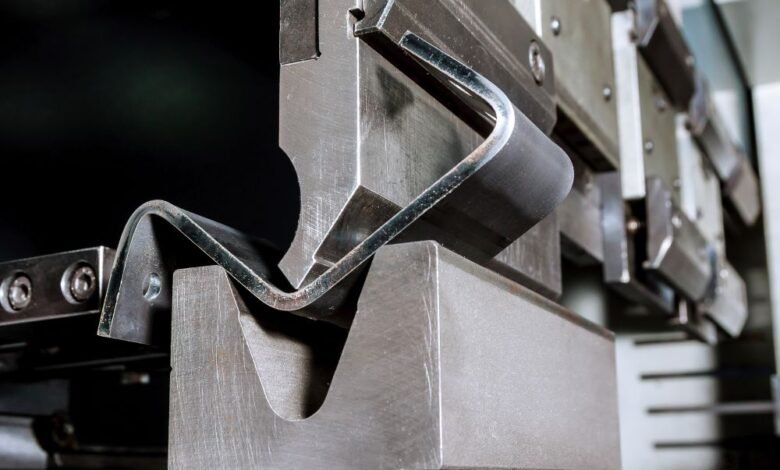
Metalworking is a fascinating craft that requires precision and the right tools. Among the essential tools for metalworking enthusiasts are metal brakes. Metal brakes come in various types, each with its own set of advantages and disadvantages. Whether you’re a seasoned metalworker or just starting out, understanding the pros and cons of different types of metal brakes is crucial for making informed decisions about your projects. The key characteristics of various metal brake types, including metal bending brakes and planishing hammers, help you choose the right tool for your needs.
Types of Metal Brakes
- Sheet Metal Brake: Sheet metal brakes are versatile for bending and shaping thin metal sheets. They come in various sizes, from small hand-operated units to large hydraulic machines.
- Box and Pan Brake: Box and pan brakes, also known as finger brakes, are designed for bending sheet metal into boxes and pans. They feature removable fingers that allow for more complex bending configurations.
- Planishing Hammer: Planishing hammers are handheld or stationary tools for smoothing and shaping metal surfaces. They excel at creating smooth and precise curves in metalwork.
Sheet Metal Brake
Pros:
1. Precise Bending
Sheet metal brakes are renowned for their precision in bending metal. They utilize a clamping mechanism and a bending leaf to apply pressure evenly across the sheet metal. This precise control results in consistent and accurate bends. Whether you’re crafting automotive panels or architectural details, sheet metal brakes ensure that your bends meet exact specifications.
2. Versatility
One of the standout advantages of sheet metal brakes is their versatility. These tools can handle various sheet metal thicknesses and materials, including aluminum, steel, and copper. This adaptability makes them indispensable in various industries, from construction to automotive repair.
3. Speed
Sheet metal brakes are known for their efficiency. They can quickly produce uniform bends, helping you save valuable time on your projects. Whether producing a series of identical parts or working on a time-sensitive project, sheet metal brakes are your go-to choice for swift and accurate bending.
Cons:
1. Limited to Flat Bends
While sheet metal brakes excel at creating flat bends, they may not be the best choice for projects that require complex or multi-dimensional bends. If your project involves intricate curves or non-linear shapes, you might need additional tools or techniques to achieve the desired results.
2. Limited to Thin Materials
Sheet metal brakes are typically used for thin sheet metal and may struggle with thicker materials. If your project involves heavy-gauge metals, you should explore alternative bending methods or consider specialized heavy-duty brakes.
Box and Pan Brake
Pros:
1. Box and Pan Capability
The defining feature of box and pan brakes is their ability to create boxes, pans, and other complex shapes. This versatility stems from their removable fingers, which can be adjusted and positioned to accommodate a wide range of bending configurations. Whether you’re fabricating custom enclosures or forming ductwork, box and pan brakes are your trusted allies.
2. Durability
Box and pan brakes are robust tools designed to handle heavy use in industrial settings. Their sturdy construction ensures they can withstand the rigors of frequent bending operations, making them suitable for high-volume production environments.
3. Versatility
Similar to sheet metal brakes, box, and pan brakes can handle a wide range of sheet metal materials. This versatility extends to the variety of shapes you can create, from simple bends to intricate folded configurations.
Cons:
1. Size and Weight
One of the drawbacks of box and pan brakes is their size and weight. These machines tend to be larger and heavier compared to sheet metal brakes. This can limit their portability, making them less suitable for on-site or cramped workspaces. Consider the available space in your workshop before investing in a box and pan brake.
2. Complexity
The box and pan brakes design, with removable fingers and more components, can be more complex to set up and use than sheet metal brakes. Adjusting the fingers correctly for your specific bending needs may require additional time and skill. Familiarity with the machine’s operation is essential to maximize its capabilities.
Planishing Hammer
Pros:
1. Precision Shaping
Planishing hammers are revered for their ability to provide precision shaping and smoothing of metal surfaces. Whether working on automotive restoration projects or creating custom metal art, these tools offer unparalleled control over shaping.
2. Control
Planishing hammers offer fine control over the force applied to the metal. This precise control allows for delicate shaping and finishing work, ensuring that your metal surfaces are smooth, free from imperfections, and match your design specifications.
3. Versatility
Planishing hammers are versatile tools that can be used for various metalworking tasks. Beyond shaping and smoothing, they are valuable for performing panel beating and removing dents from metal surfaces. Their versatility extends to different metals, including steel, aluminum, and copper.
Cons:
1. Hand Fatigue
Handheld planishing hammers, especially for extended periods, can be tiring due to the manual effort required. The repetitive motion of manually operating the hammer can lead to hand fatigue and discomfort. It’s important to take regular breaks to avoid strain.
2. Limited to Smaller Projects
While planishing hammers are suitable for many tasks, they may not be ideal for large-scale metalworking projects. Their handheld or stationary nature makes them better suited for precision work on smaller to medium-sized components.
Conclusion
The right metal brake type choice depends on your specific metalworking needs and preferences. Sheet metal brakes offer precision and efficiency for flat bends, while box and pan brakes excel in creating complex shapes and are built for durability. Planishing hammers are ideal for precise shaping and finishing work. To explore a wide range of metal brakes and find the one that suits your projects, visit Eastwood, where you’ll discover a selection of high-quality metalworking tools and equipment. Understanding the pros and cons of different metal brake types, you can make informed decisions and elevate the quality of your metalworking endeavors.



